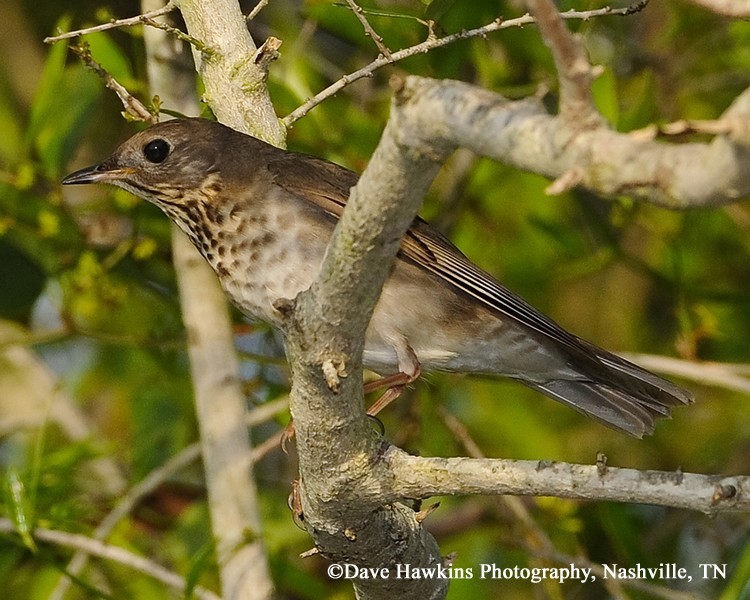Gray-cheeked Thrush, Catharus minimus
The Gray-cheeked Thrush is a relatively shy species, especially during migration when it passes through Tennessee. It is the least well studies of the spotted thrushes, and has the most northern breeding range stretching across the taiga from Newfoundland to eastern Siberia. The non-breeding range is not well known, but includes parts of South America east of the Andes from Colombia, to northwestern Brazil.
The Gray-cheeked Thrush is a regular, but uncommon spring and fall migrant across Tennessee, and is most likely to be found in wooded areas with thick undergrowth.
Description: This medium-sized thrush has brownish-gray upperparts and tail, is pale below with heavier spotting on the breast than other thrushes, a plain gray face with some light streaks but no eye-ring.
Length: 7.25"
Wingspan: 13"
Weight: 1.1 oz.
Voice: Song is a descending spiral, similar to that of the Veery, but higher, thinner, and more nasal.
Similar Species:
- Swainson's Thrush has similar markings and coloring, but the face is buffy with a distinct buffy eye-ring.
- Veery has a similar plain face, but more muted spotting on the breast, and is usually more reddish overall.
- Hermit Thrush has a distinct rusty tail, which it characteristically flicks up and slowly lowers.
Habitat: Found in wooded areas with thick undergrowth.
Diet: Insects and other arthropods, fruit.
Nesting and reproduction: The Gray-cheeked Thrush has never been known to nest in Tennessee.
Status in Tennessee: The Gray-cheeked Thrush is a regular, but uncommon spring and fall migrant, and very rare summer visitor across the state.
Dynamic map of Gray-cheeked Thrush eBird observations in Tennessee
Fun Facts:
- The Gray-cheeked and Bicknell's Thrushes were only recently recognized as separate species. Most of the information published in the last century under the name of "Gray-cheeked Thrush" was actually the more rare Bicknell's Thrush. Even though the Gray-cheeked Thrush has a much larger range across North America, the Bicknell's Thrush's small range is closer to centers of human population, and was therefore the easier species to study.
- Bicknell's Thrush is essentially indistinguishable from the Gray-cheeked Thrush except for its slightly larger size and different song.
Best place to see in Tennessee: Wooded areas across the state during spring and fall migration.
